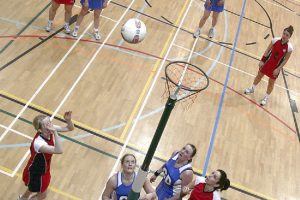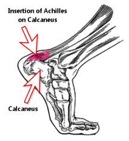
With soccer, football and netball season just about to get underway, it is worth mentioning this article for all of us who have had children who complain that their heels have been getting so sore throughout the season.
Severs Disease
Although the name sounds frightening, Severs Disease is essentially not a disease. It is the name that describes a common condition in physically active children where the growth plate of the heel becomes inflamed. Also called calcaneal apophysitis, the condition can be very painful but is only temporary and has no long term effects.
Children complain of pain at the back of the heel
Children will describe pain at the back of the heel where the growth plate has not yet fully developed and calcified. It usually occurs in the 2 year period in early adolescence or puberty when children grow most rapidly. This growth spurt can begin any time between the ages of 8-13 in girls and 10-15 in boys. Severs rarely occurs in older teens because the growth plate of the heel fuses together into a mature bone at around the age of 15.
Growth spurts can make the heel less flexible
 During the growth spurt the long bones of the leg including tibia, femour and heel bone (calcaneus) often grows faster than the leg muscles and tendons. This can cause the leg muscles to become tight and overstretched which makes the heel less flexible and places more load on the growth plate.
During the growth spurt the long bones of the leg including tibia, femour and heel bone (calcaneus) often grows faster than the leg muscles and tendons. This can cause the leg muscles to become tight and overstretched which makes the heel less flexible and places more load on the growth plate.
Repeated stress or force will result in inflammation which causes the pain associated with Severs Disease. Such stresses result from sports or activities that require a lot of running, jumping and landing, especially on hard surfaces. Examples would include gymnastics, basketball and track running.
On the other hand, Severs can also occur in the less active child who may have the predisposing factors of flat feet, be overweight and be required to stand for prolonged periods.
Pain relief and rest is needed for heel problems
The immediate goal of treatment is pain relief. The symptoms will generally worsen during or after activity so the most important aspect of treatment initially is rest from aggravating activity which helps to relieve stress on the heel bone.
Physiotherapy treatment may include soft tissue release, ultrasound and advice about footwear and activity.
Physiotherapists also play an important role in prescribing lower limb stretches and eccentric strengthening exercises to facilitate a timely and successful return to physical activity.
Contact MGS Physiotherapy for help to prepare for the soccer, football and netball seasons
Your MGS Physiotherapist can help prepare pre-season fitness regimes and if they feel Orthotics or extra support is needed they will guide you in the right direction.
